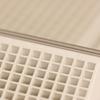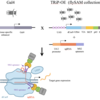J. A. Bosch, G. Birchak, and N. Perrimon. 2021. “Precise genome engineering in Drosophila using prime editing.” Proc Natl Acad Sci U S A, 118.Abstract
Precise genome editing is a valuable tool to study gene function in model organisms. Prime editing, a precise editing system developed in mammalian cells, does not require double-strand breaks or donor DNA and has low off-target effects. Here, we applied prime editing for the model organism Drosophila melanogaster and developed conditions for optimal editing. By expressing prime editing components in cultured cells or somatic cells of transgenic flies, we precisely introduce premature stop codons in three classical visible marker genes, ebony, white, and forked Furthermore, by restricting editing to germ cells, we demonstrate efficient germ-line transmission of a precise edit in ebony to 36% of progeny. Our results suggest that prime editing is a useful system in Drosophila to study gene function, such as engineering precise point mutations, deletions, or epitope tags.



